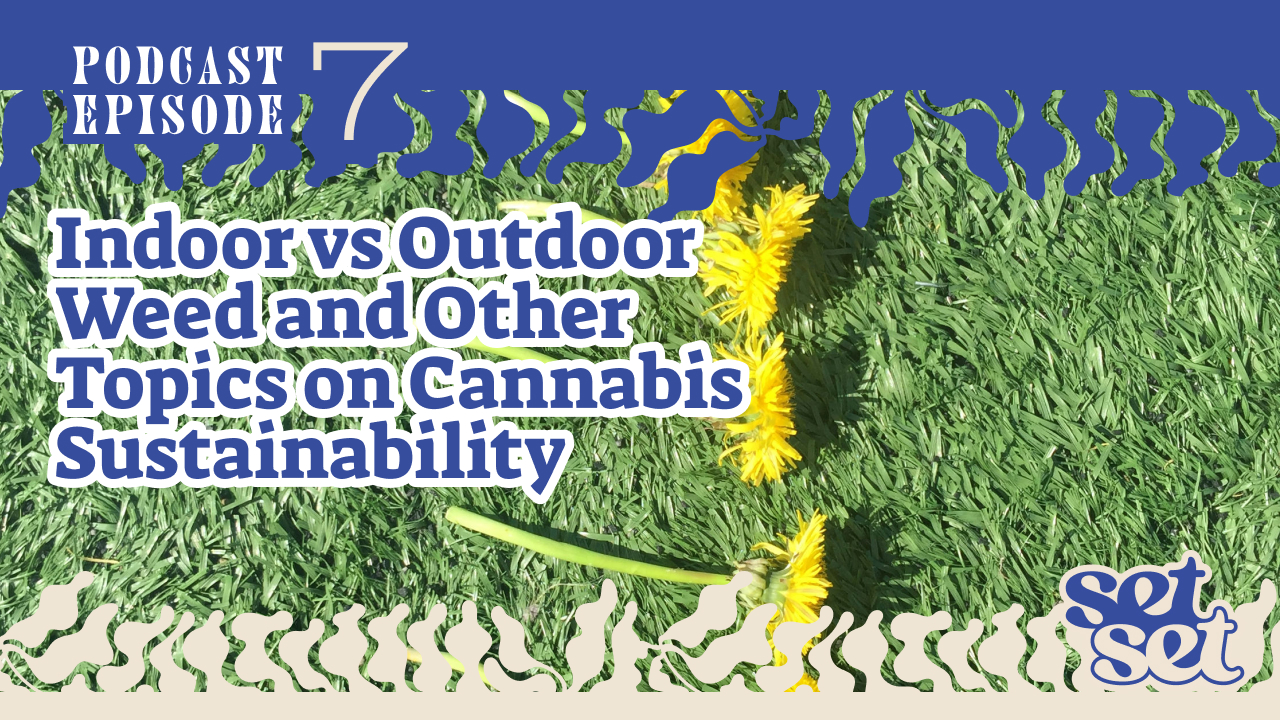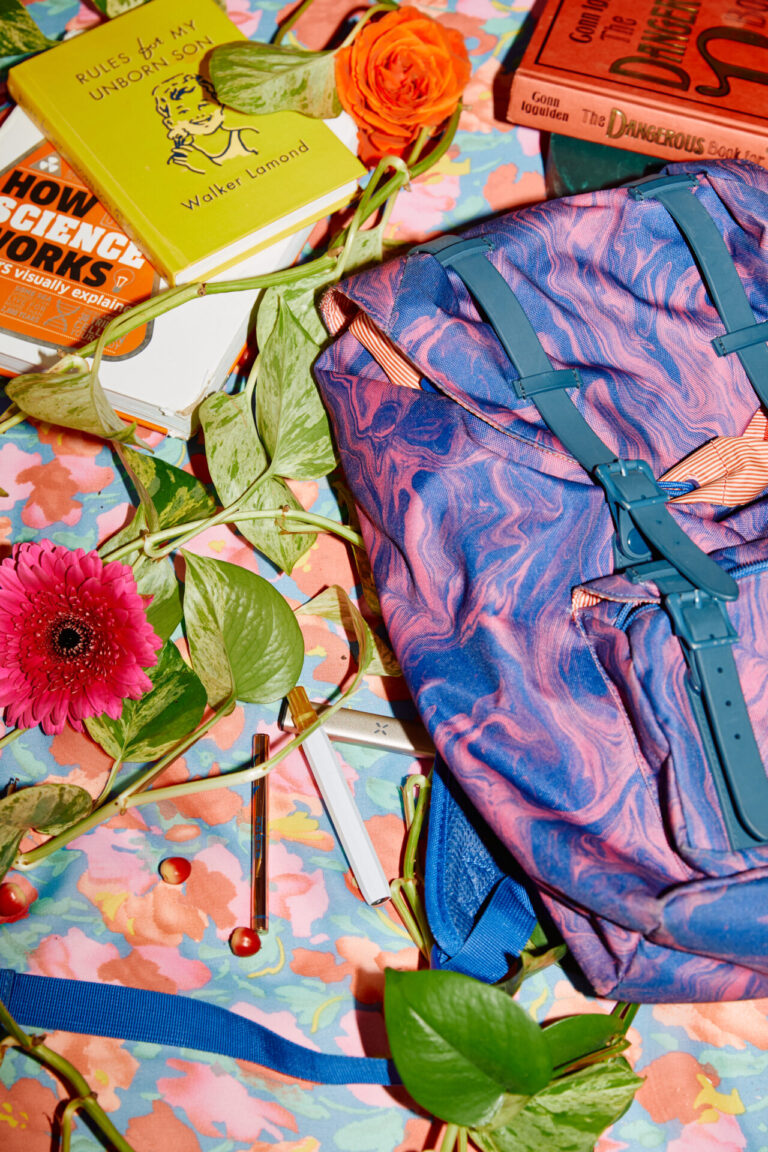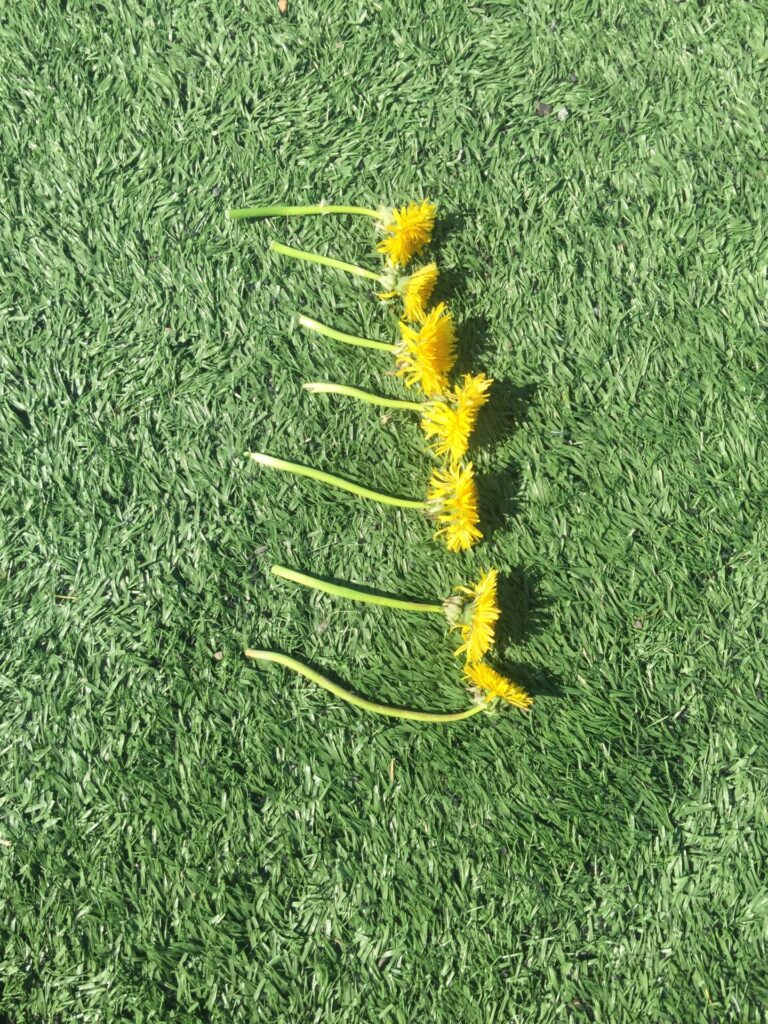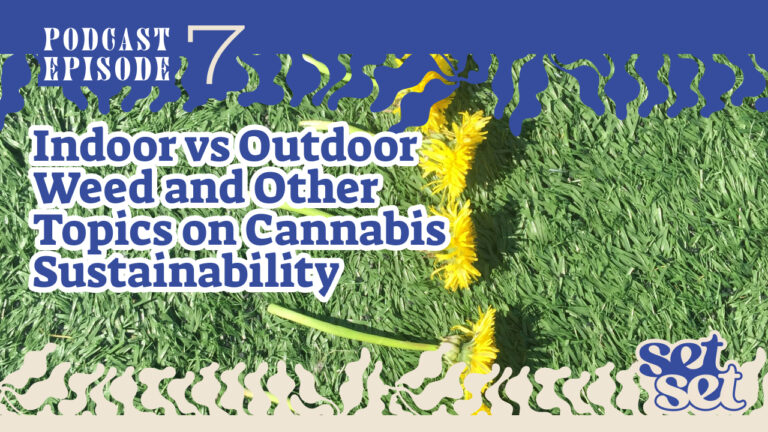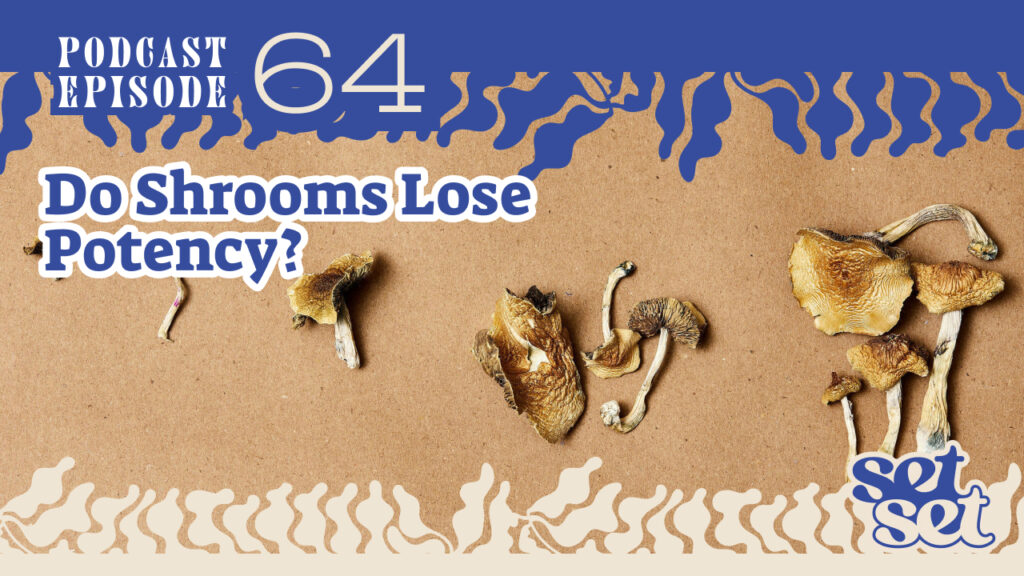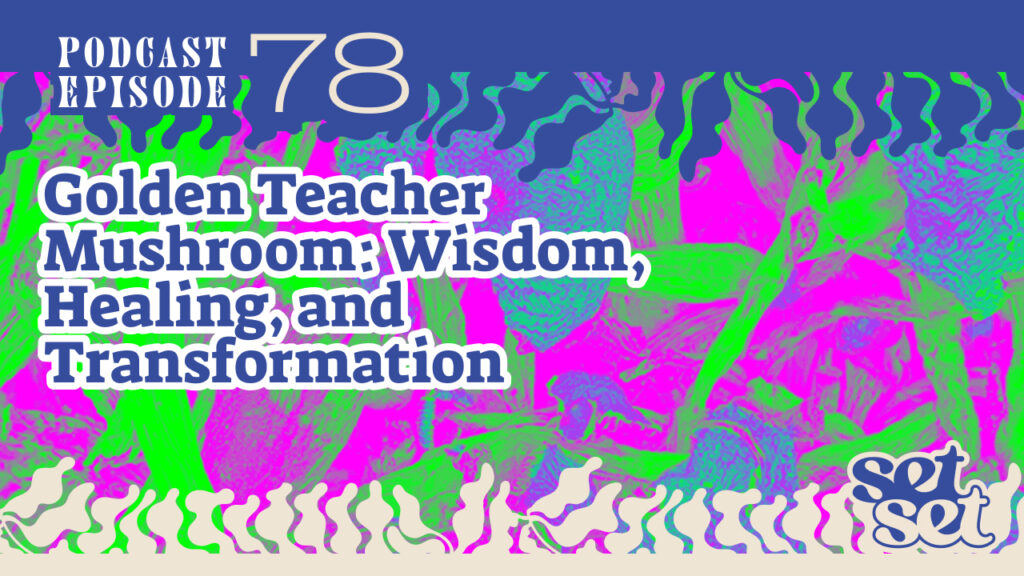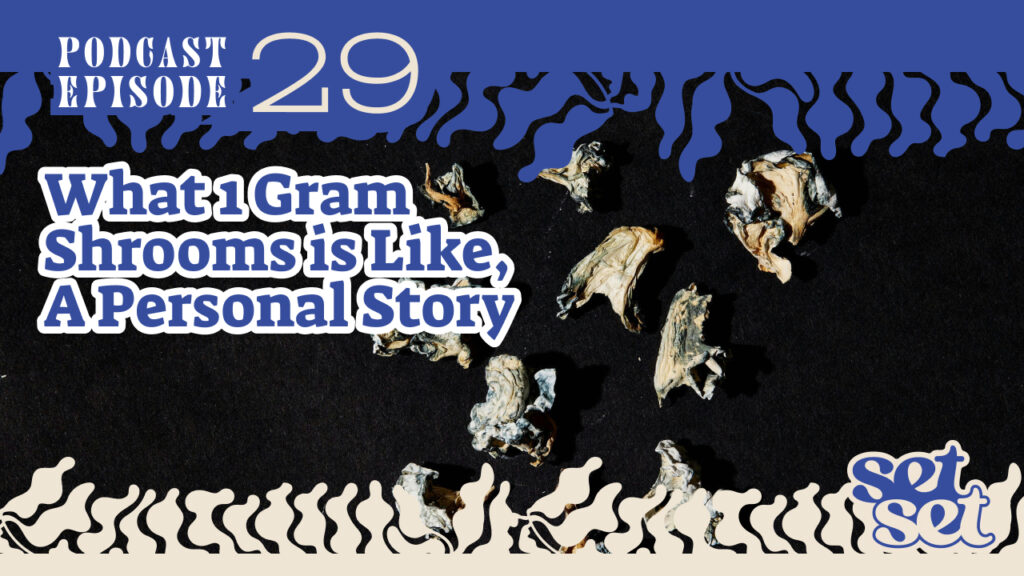0:00:00 April Pride: This podcast discusses cannabis and is intended for audiences 21 and over.
0:00:10 April Pride: Welcome to The High Guide. I’m your host, April Pride. Today’s episode is a recently recorded event in Clubhouse, where you can join me each Friday at 1 PM Pacific time with an assortment of high guides as we cover all things a-z related to plant medicine. Today’s episode picks up where last week’s episode left off, and maybe it’s where we should have started things on the farm, Aster Farms specifically. I recently sat down with Aster CEO Julia Jacobson to discuss her outdoor grows, first of its kind sustainability report published earlier this spring. Julia breaks down the choices she and other cannabis cultivators make taking a plant seed to sale, we also get into a very different wine versus weed conversation, and that is the impending battle between the wine and the weed industries as resources including land, energy and water become more scarce.
0:01:02 April Pride: They did just an incredible job of highlighting the ways in which the cannabis industry is contributing in negative ways to what we’re all trying to do, which is to clean up Mother Earth, and the ways in which Aster Farms is saying, Hey, we can do this differently, and this is how it has a positive impact on our bottom line. You can create a sustainable business by putting sustainability at the forefront of everything that you do, I think it was about a month ago, and I’ve never had a company report on themselves in terms of sustainability for other supply chain as thorough or if ever as Aster Farms did when I received that email, and Julia is the CEO of Aster Farms. She’s one of the few women licensed cultivators in California that has also taken BC money like and to be able to farm the way that you wanna farm and that you feel good and are aligned with your personal values to be able to run your business that way. And to take money from what some people refer to as the devil is a tricky thing, and my hat goes off to you first off for being able to put out a report that shows that you’ve stayed true to your intentions and it’s working, so… Yeah, big congratulations to you on that.
0:02:29 Julia Jacobson: Thank you.
0:02:29 April Pride: Yes, it’s big. So I thought we could just take this report page by page because it really brings to life, what we have to gain and what’s really at stake. So if you could, if just Julia, could you please just introduce yourself, how you came to be a weed farmer.
0:02:50 Julia Jacobson: I started my career actually in the fashion industry, I was a buyer for Bloomingdale’s, and after a few years, I saw some holes in the market, so I left my job to start my first start-up and ultimately sold it to XO group, the media company that runs The Knot and The Bump. But during that time, I developed chronic migraines. I was ending up in the hospital every few months, and one of the times I was in the ER, the doctor said to me, If you have access to it and you feel comfortable, please try cannabis for your migraines, I’ve seen it help a lot of people. And I had been a recreational user, but never in my life had I thought to light up a joint when I was in the middle of a migraine attack, and I did, I tried it. And it completely changed my life. So that’s how I originally got into the business. My other connection, my husband, who’s my co-founder, Sam, his grandparents have actually been growing organic off-the-grid cannabis in Mendocino since 1968, so it is three generations of cannabis cultivation in the family. Sam’s grandfather was actually the first person to go to prison for cultivating cannabis in Mendocino, and legend has it, this part we have not confirmed, but legend has it that his family brought indica seeds to California.
0:04:14 Julia Jacobson: Sam grew up with family trimming around him and going to the family ranch and knew what was happening, they have been growing off the grid in sustainable ways since the ’60s when they were raided by the DA, they said it was one of the most sophisticated drip irrigation systems they had ever seen at that point.
0:04:33 April Pride: In California, specifically, total cultivation licenses were just at 6,000, just at over 6,000, but total cultivation acres in California of cannabis is 1513. Can anybody guess the total number of acres of grape-bearing wine land in California? It’s 590,000 acres compared to…
0:05:02.9 Julia Jacobson: Oh my goodness.
0:05:05 April Pride: Yeah, compared to 1500 for cannabis. Total output in pounds of weed in California in 2019, 1.3 million, there are 3.9 million tons of grapes produced in the US in 2018 for wine. So it’s just so crazy because you go in to talk about water use in the next slide, so the total production of US cultivation, both legal and illegal in 2019 of cannabis was almost 30 million pounds.
0:05:39 Julia Jacobson: Which is a lot. Which is a fascinating but…
0:05:41 April Pride: Which is a lot… Okay, compared to what?
0:05:43 Julia Jacobson: If you look at the legal market, I think it’s somewhere like 17 million of those 30 million pounds are coming from California, but only 1.3 million of them are in the legal market.
0:05:55 April Pride: Okay, let’s say that again. So 30 million total US cultivated weed in 2019, 17 million pounds of which cultivated in California, but only 1.3 million is licensed from licensed grows. Okay, so commercial agriculture uses approximately 80% of California’s developed water, but cannabis, as I said, is like a fraction of the water that’s used, so Aster Farms has three sources of water. Can you talk a little bit about the water cycle on your farm?
0:06:30 Julia Jacobson: Yeah, absolutely. So we have a couple of different sources of water on our site, and one really important thing is you have to have water rights to use the water. If you have a stream on your site or a well, or a spring, you have to actually apply for cannabis rights to use that water for cannabis, and then there are rules around which types of water sources you can use at certain times of the year, so for example, we have a spring on our property that feeds water for the residential house and other uses, that is only allowed to be pulled from between November and April, so during the actual cultivation season, we are not allowed to pull from our spring. We built a well in order to supplement and pull during that season, and we also have a 400,000 gallon ag pond that gets filled in the winter from the spring and from rainfall and then get supplemented in the summer from our well. So we have three different sources of water right now, each utilized as per their various regulations and various best times of the year to be pulled from or utilized. So water is probably one of the most important aspects when it comes to actual regulations.
0:07:52 Julia Jacobson: In terms of how we make our water as sustainable as possible, we do a couple of things. So first of all, our ag pond collects rain water, it collects runoff, so that’s obviously a very sustainable way to pull water because we’re not pulling it out of the actual aquifer, we also irrigate at night, so when it’s cooler out, there’s less evaporations, so we’re being more efficient with our water use, that’s very important. We use a drip irrigation system that is very accurate, it’s a very slow system, so the plants are absorbing the right amount of water as opposed to being doused all in one at one time, and that not all of that water actually getting absorbed into the roots, it’s going further into the rest of the soil, and we also use mulch. So we use a straw and we cover both our irrigation lines and the soil that keeps the temperature lower both in the irrigation lines and in the soil, and it helps prevent evaporation. So we employ various techniques that are traditional agricultural techniques to make our water use as efficient as possible.
0:09:02 April Pride: Thank you so much for explaining the intricacies of it, did the pond exist on the property when you purchased it and there was an intention to utilize it?
0:09:11 Julia Jacobson: There was not. So we added the ag pond in our instance, yes, it is a poly-lined pond, so it has a liner in it, and it is specifically used and permitted for commercial water use. And one of the things about ag ponds, you really have to be controlling the pH level because if the water is sitting too long, you can end up having pH issues. So we have used a floating wetland, so we basically use wetland plants, we build a floating structure that their roots are able to go into the water, and that helps oxygenate and clean the water and keep it as healthy as possible, so we try to use nature and align with nature to do the work that we need done.
0:10:00 April Pride: I’m really struck by the water usage in comparison of the wine industry and the cannabis industry, so one of the things that your report outlines here is for one glass of wine, it takes 25 gallons of water to produce. So one vine of wine grapes is about 50 to 100 square feet and one vine can produce two to three bottles of wine, so we’re talking about Aster Farms for one square foot of cannabis cultivation, it’s… You use 22 gallons. What that output is, of that one square foot, to use 22 gallons to cultivate weed in one square foot…
0:10:47 Julia Jacobson: How about we talk about it in terms of finished product?
0:10:50 April Pride: That helps, yeah.
0:10:52 Julia Jacobson: So to grow an eighth of weed takes about 2.5 gallons for Aster Farms compared to 25 gallons for a glass of wine.
0:11:01 April Pride: Compared to 25 gallons for one glass of wine and eighth will last people anywhere from two days to two years spending.
0:11:09 Julia Jacobson: Exactly, exactly, exactly. And then, I mean, you think about an almond, it takes one gallon of water to grow a single almond, and so agriculture in general is water intensive, but there are ways, at least in cannabis cultivation to keep those metrics down to levels that don’t feel as offensive.
0:11:37 April Pride: Can you talk about making that decision and why different farms make the decision to use it to grow indoor when it just requires so much more energy, including water.
0:11:51 Julia Jacobson: Absolutely, so there are pros and cons to each of the various ways to grow, and then there are also just variables that have to do with where you have the location. So in terms of the choices that you can make, when you’re growing indoors, you can get multiple seasons out of a year, I believe it’s between four and six harvests in a single grow room, but you’re able to turn your harvest a lot faster because you’re pushing the plant and tricking it with artificial light, so there are also financial implications to which direction you go.
0:12:29 April Pride: Just to give you all a big picture, 3% of cannabis industry or cannabis that’s produced legally is from outdoor grows, 60% is indoor and 37% greenhouse. So it’s just a fraction of the cannabis that’s available to consumers is available or is from farms with outdoor grows. Why would you choose to grow indoor?
0:12:54 Julia Jacobson: Your yield isn’t necessarily higher, because typically outdoor grows are larger square feet in order to make up that same yield in an annual basis, but the more harvest per year is more about consistency and freshness with product. When you’re an outdoor grower and you’re harvesting in October, you’re harvesting thousands of pounds, but you’re selling that product over the course of the next year, so you’re doing techniques like keeping it with nitrogen to keep it fresh, there are other type things that we do to keep our product as fresh as possible, as long as possible, whereas with an indoor you’re doing much smaller yields each time, but you’re flipping that fresh product each time you harvest. One of the reasons we grow outdoors is we believe that growing in living soil outdoors actually creates the best cannabinoid and terpene profile, so we actually believe that the way that we’re growing gives the best effects from the cannabis and it’s also the best way for the environment and for the people growing it, so that’s why we choose to do it, the hardest way. What we have seen, and this is in the data in testing, is that our terpene profiles and our cannabinoid profiles are a lot more complex.
0:14:13 Julia Jacobson: We have once gotten our terpenes, up to 6%, terpenes are typically anywhere from one to two at most, 3%, so we’re seeing really high terpene levels. From my personal experience as a very avid consumer, I like indoor weed, I like outdoor, I like greenhouse, what I find is that typically with indoor, it’s a much heavier hit up front, but it’s much shallower, and when I’m consuming outdoor cannabis, it’s much more of a deeper effect, but it might be a little bit more long-lasting, you might not realize it as hard up at front, but it’s gonna last longer and it’s gonna be a deeper, more complex effect, and that’s what we are most interested in providing to our consumers.
0:15:04 April Pride: I want to talk a little bit about greenhouse gas, because in your report, an Aster Farms report, it says that indoor and greenhouse cannabis cultivation have exceeded the coal mining industry in Colorado in terms of their greenhouse or yeah, their greenhouse emissions, gas emissions.
0:15:25 Julia Jacobson: State like Colorado does not have the climate to be growing a real true outdoor season. So the majority of the cannabis grown there is in greenhouses and in indoor. And so with the expansion, as cannabis continues, more cultivators continue to get licensed, you’re gonna see a lot more happening in structures that are creating a lot of greenhouse gas emissions. So I think with New York coming online, with a lot of these states that are gonna have really large cannabis markets, but also don’t have climates where outdoor is necessarily gonna be that viable, we’re gonna see some serious impacts in greenhouse gas emissions.
0:16:12 April Pride: And this is the problem with not allowing for reciprocity to not be able to ship what’s grown in California to New York, just unbelievable.
0:16:23 Julia Jacobson: Yes, and you know what, it goes beyond that, and I’m gonna get specific about the county that we are in, in California, in Lake County right now, there is a big push from the traditional ag community that on any protected on any what is considered farm land, so any land that is good for farming and is protected either on a federal level, a state level or a local level, cannabis is not allowed to be grown in ground outdoors, it must be grown inside a building, so either…
0:17:00 April Pride: Why?
0:17:01 Julia Jacobson: Either a greenhouse that has to have cement augers put into the ground or in an indoor building, so let’s just take a pause on this, on the land that it is protected by our country, to be considered the best land, the best soil to put roots into the ground, the ag industry is forcing cannabis to create cement foundations, destroy that soil, destroy that land. And the reason is that… This is the reason that we are being told, traditional ag believes, and they have literally said in Board of Supervisors meetings, we know that the science doesn’t back this up, but that doesn’t change the fact that the wine industry, it is specifically the wine industry believes that the terpenes from cannabis are getting onto the wine and affecting the flavors and the taste profiles of the wine, and that vineyards are having orders cancelled because the wine company that is buying from that vineyard has found out that there’s a cannabis operation next door, it is…
0:18:11 April Pride: Is that all urban myth?
0:18:14 Julia Jacobson: All a bunch of BS.
0:18:16 April Pride: Okay, yeah, wow.
0:18:20 Julia Jacobson: There have been studies that show that the terpenes, the terpene oils, do not contaminate wine grapes, eucalyptus trees have been shown to grow around vineyards and not have the significant effects that they’re talking about that would actually truly affect a commercial operation, so it’s really interesting to see how traditional ag and cannabis are going to live side by side, and how the tension between these two sectors in what truly is agricultural industry are pushing them each other into areas that are not sustainable and not environmentally sound. So one of the things that we like to point out on these Board of Supervisors meetings is that cannabis is an agricultural product. People seem to forget that when agricultural rules are being written, it means that a certain subset of land in this county will be either totally off-limits to cannabis cultivators or cultivators will have to choose to grow in a greenhouse or indoor setting, the taxes to the county are double if you grow indoors.
0:19:35 April Pride: I wanna continue just to quickly reset the room, my name is April Pride, I’m the host of The High Guide podcast available to you wherever you listen to podcast, and we’re talking today to Julia Jacobson, who is the CEO of Aster Farms that produced… Her company, Aster Farms, produced a sustainability report earlier this spring and we’re going through the results of it, which are eye-opening, and we were just talking about gas emissions, we’ve talked about water usage, and I wanna move on to solid waste, this is… There’s just one fact that I want everyone to hear, and that is the plastic packaging waste of one average pre-roll equals 96 straws, 96 straws.
0:20:23 Julia Jacobson: But that’s not the only area that is really egregious when it comes to solid waste, and particularly because of regulations in the track and trace system, which is called Metrc, every plant, every seed, every lot of clones has to have a tag on it. Those tags are provided by the state, by the Metrc track and trace company, and the ones for packaged product are plastic stickers, the ones for plants are plastic tags that are thick enough to be able to withhold the elements to have water and fertilizer and nutrients sprayed on them and make it through a season. So these are not biodegradable pieces of plastic, and every stage that your plant goes through, so when it’s a seed, it has one tag. When it moves into its veg stage lot, it has another tag. When it moves into flowering, each plant gets its own individual tag, then it gets move to a batch tag, then it gets moved, so at each point you’re switching to a different Metrc tag, we order thousands of Metrc tags over the course of a year, and we are one small operator, every single one of those Metrc tags has to be attached to the plant with zip tie. So now you add in all the zip ties that are… Each stage of the plant, new zip tie, new tag, so due to some of the ways that the regulations have been crafted, we are producing an excessive amount of solid waste in areas that have nothing to do with how cannabis has ever been grown or sold or distributed in the past.
0:22:02 April Pride: And that’s one step in the regulatory process, one part of the supply chain that’s producing so much waste… Is there another example?
0:22:12 Julia Jacobson: There are other aspects of the cultivation operation that are incredibly… Produce a lot of solid waste. So if you’re growing in pots, so in indoor typically is grown in pots, and greenhouse typically is grown in pots, a lot of people are actually dumping that soil, it’s not living soil, it’s dead soil, you’re just pumping it with nutrients, so literally the soil gets dumped. I know an amazing company, Pure Beauty, they do indoor, but they do their indoor in the most sustainable regenerative way possible, and they donate their used soil to the city parks, so there are companies doing it the right way when they’re in a position where they have to do something like that, but a lot of soil gets dumped, a lot of trellis gets dumped, and then when you’re thinking of growing in pots, these are five-gallon pots, 10-gallon pots, one gallon pots, they get cracks in them, they get thrown away. So when we’re growing outdoors, truly, we are just using the sun, there is no energy used to physically grow the plants outdoors. When you… When it gets time to harvest and cure and dry that product, that’s really where the energy use comes in.
0:23:28 Julia Jacobson: So for Aster Farms, our energy use in 2020 primarily came from our processing facility in our dry pots, in order to dry cannabis, it takes a pretty serious HVAC, dehumidifying and fan system, and that is regardless of whether you’re growing indoors, outdoors, greenhouse. Cannabis has to be dried inside and it has to be sucked out of all of its humidity, so that is a very energy-intensive process at our farm, but with our expansion, we are gonna be doing complete solar power for our processing for our expansion.
0:24:10 April Pride: That is big news. I think that is where we will, we’ll end. Again, we’re talking to Julia Jacobson, she’s the CEO of Aster Farms, which put out its first sustainability report, highlighting the ways in which the cannabis industry is contributing in negative ways to what we’re all trying to do, which is to clean up Mother Earth. And the ways in which Aster Farms is saying, Hey, we can do this differently, and this is how it has a positive impact on our bottom line. You can create a sustainable business by putting sustainability at the forefront of everything that you do, I’m happy to see that Aster Farms, the foundation on which you built your farm operation is also succeeding. Yeah, thank you for sharing the report with everybody, it’s given us a lot to… I hope it’s given a lot of brands something to strive for for themselves, but it’s also as a consumer, it’s given me something that I can take to other people that wanna figure out how they can do this “the right way,” to get high the right way. And it really is to choose a farm that grows outdoor. So thank you, Julia.
0:25:18 Julia Jacobson: Thank you, April, really appreciate you having me on here and letting us talk about the report, you can find us at asterfarms.com, and if you go to Reports, you can download the entire sustainability report there. You can also find us on Instagram at @asterfarms. So thank you all, I really, really appreciate the support and stay tuned for our next sustainability report.
0:25:43 April Pride: Thanks for listening to this recently recorded event in Clubhouse and join me, April Pride each Friday at 1 PM, Pacific, with an assortment of high guides as we cover all things a-z related to plant medicine. Of course, you can listen to a new episode of The High Guide now every Friday, please subscribe and follow wherever you listen to podcasts. For the month of June we’ll air more Clubhouse sessions, and in July we’ll kick off our monthly themes, an a-z list from expert high guides. Thanks to our high guides in this and every episode. A special thanks to The High Guides writer and content editor, Megan Ridley, our marketing coordinator, Bianca Kratzke, and brand manager, Molly Longest, and our producers, Nick Patri and Josh Brown.

